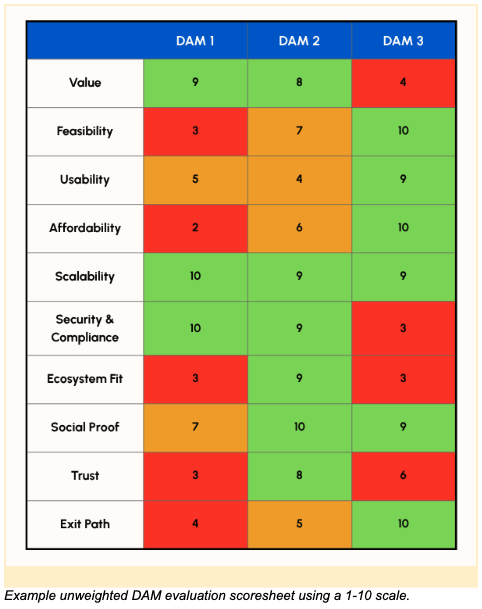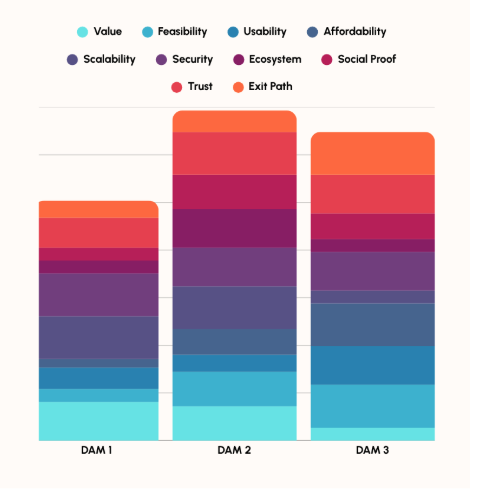Choosing a Digital Asset Management System: The Final Decision
August 27, 2025
After months of evaluating platforms, the moment has arrived: it’s time to make a decision on your digital asset management (DAM) system. Your choice will shape how your teams access, manage, and use content for years. Our goal is to help you move forward with confidence.
We assume you’ve already done the necessary legwork: aligning stakeholders, identifying requirements, evaluating right-fit vendors, and running demos and a POC tailored to your assets and workflows. If not, consider revisiting those steps—take a look at our previous posts in this series.
Reconnect with Your Digital Asset Management System Goals
Before comparing feature lists or pricing tables, revisit why you began this process. What problems are you trying to solve? What does success look like a year from now? Make sure your final decision is rooted in those goals. Your task is to choose the digital asset management system that best supports your organization, not just the one with the flashiest interface.
Evaluate DAM Vendors Using a Structured Framework
A decision of this magnitude benefits from objectivity. Using a structured scoring model or decision matrix can help your team make a transparent, evidence-based selection. This approach allows you to evaluate each platform against consistent criteria, assign weights based on your priorities, and compare options side by side. It also creates documentation that supports internal alignment and future reference.
Ten Dimensions to Evaluate Each Digital Asset Management System Vendor Finalist:
1. Value
Does the platform deliver the functionality you need? Does it offer capabilities that significantly improve how your organization produces, manages, and shares content? Focus on alignment with your current and future needs, not the total number of features.
2. Feasibility
Can you implement and maintain the platform with your available resources? Consider implementation effort, integration complexity, and ongoing management. A great-looking system may require infrastructure or capacity you don’t currently have.
3. Usability
How easy is the system for different user groups—admins, content creators, and end users? If these groups weren’t included in demos, or didn’t participate in a proof of concept, go back a step. Be sure to get input from the people who will be affected most. Don’t forget to test admin functionality too.
4. Affordability
Is the pricing model sustainable? In addition to license fees, consider implementation (including integration and migration), training, support, storage, and feature add-ons. Don’t forget to look at the cost of utilizing AI services, too. We recommend projecting costs over at least three years to get a clear picture of the price.
5. Scalability
Will the platform grow with you? Think about asset volume, metadata complexity, user numbers, and geographic spread. If you have a particularly large collection or number of users, ask the vendors what their largest deployments are. Review whether the vendor’s roadmap aligns with your growth trajectory.
6. Security & Compliance
Does the platform meet your organization’s security and compliance requirements? Evaluate encryption, access controls, audit trails, and alignment with standards like GDPR or SOC 2. Consider both technical and policy aspects.
7. Ecosystem Fit
How well does the platform integrate with your current systems? Assess APIs, connectors, plugin availability, and the vendor’s experience with relevant third-party tools. Custom integration can quickly become a significant area of cost and complexity, so look for vendors that plug-in to your ecosystem easily.
8. Social Proof
Have similar organizations (in industry, size, scale, complexity) adopted this platform successfully? Are they growing with it over time? Review case studies, references, and testimonials. Speak directly with current customers to learn about the vendor’s strengths and limitations.
9. Trust
Does the vendor seem like a reliable long-term partner? Look at financial stability, delivery track record, and support reputation. Review SLAs, support channels, and upgrade policies. You’ll get great insights when you speak to other customers.
10. Exit Path
If your needs change, can you move on easily? Ask vendors how they support full export of assets, metadata, vocabularies, and user data in open formats. Understand the terms and costs of a potential exit.
Assign Weights and Score Objectively
Not all criteria carry the same weight. A nonprofit with limited IT support may prioritize feasibility and security, while a global brand may focus on integration and scalability. Assign weights to reflect your priorities, then score each option accordingly.
Final DAM evaluation using weighted scoring
Include a cross-functional team in the process to reflect diverse perspectives and build alignment. Document your evaluation so you can refer back to it as needed.
Avoid Common Final-Decision Pitfalls
Even with a strong evaluation process, watch out for these missteps:
- Letting brand recognition or peer adoption sway your decision
- Letting cost outweigh actual needs
- Underestimating implementation, integration, and migration effort
- Failing to thoroughly vet vendor support and services
Get Internal Buy-In and Document the Decision
Before finalizing, make sure all key stakeholders are aligned. Review the decision rationale with leadership, legal, procurement, and IT to surface any final concerns. And as a reminder, don’t forget to talk to your chosen vendor’s current customers (and not just the ones they suggest you talk to!)
Document your decision, including priorities and tradeoffs. This record will be valuable during implementation and future reviews.
Final Thoughts
Selecting a DAM system is more than a software purchase. It’s a strategic decision that will shape how your organization manages content for years. Use comprehensive evaluation criteria and a collaborative process to choose with confidence.
When implementation begins, you’ll be glad you did.

